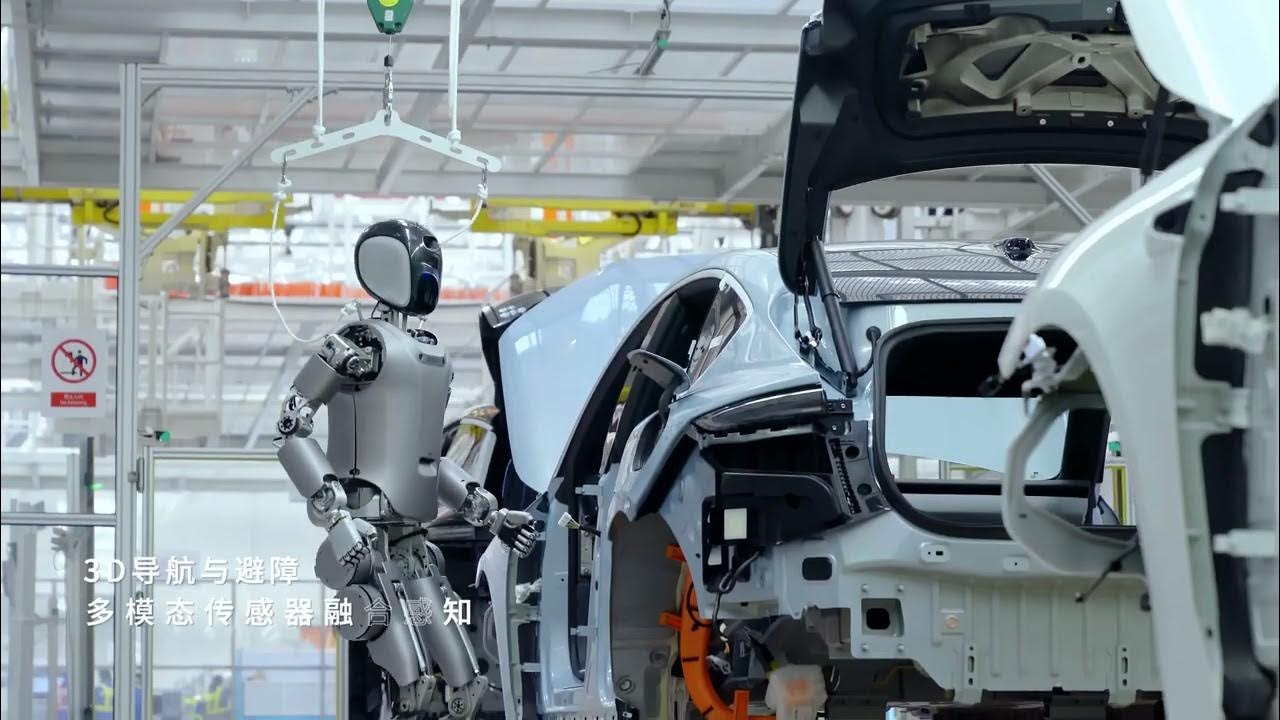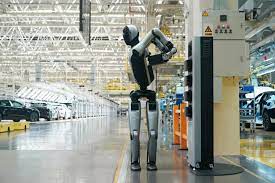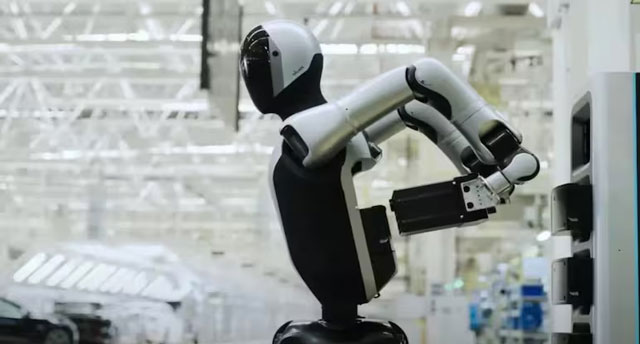
China has achieved a groundbreaking milestone in robotics technology with the unveiling of the Walker S2, the world’s first humanoid robot capable of autonomously changing its own battery without human intervention. Developed by Shenzhen-based UBTech Robotics, this innovative China S2 robot represents a paradigm shift in industrial automation, enabling continuous 24/7 operations that were previously impossible with traditional robotic systems. The Walker S2’s autonomous battery-swapping capability addresses one of the most persistent challenges in robotics deployment: maintaining uninterrupted operation while managing power requirements independently. This technological breakthrough positions China at the forefront of the global humanoid robotics race, with significant implications for manufacturing efficiency and the future of automated industrial processes.
Advanced Technical Specifications and Design Architecture
The Walker S2 humanoid robot demonstrates sophisticated engineering with its anthropomorphic design that closely mimics human proportions and capabilities. Standing at 5 feet 3 inches (162 cm) tall and weighing approximately 95 pounds (43 kilograms), the China S2 robot maintains dimensions comparable to a small adult human, enabling seamless integration into environments originally designed for human workers. The robot incorporates 20 degrees of freedom through its articulated joint system, providing the mechanical flexibility necessary for complex industrial tasks and precise battery manipulation procedures.
The power architecture represents the most innovative aspect of the Walker S2’s design, featuring a dual-battery system utilizing 48-volt lithium battery technology. Each battery provides sufficient power for two hours of continuous walking or four hours of stationary operation before requiring replacement. The dual-battery configuration ensures uninterrupted operation during battery swap procedures, with seamless switching between primary and backup power sources to maintain critical task execution. This intelligent power management system can autonomously assess remaining battery capacity and determine optimal timing for battery replacement based on current operational priorities and task urgency levels.
The robot’s connectivity features include comprehensive Wi-Fi and Bluetooth compatibility, facilitating integration with existing industrial control networks and enabling real-time coordination with other automated systems. The Walker S2 also incorporates an RGB stereo vision system that provides “human-eye” binocular stereo vision perception, enhancing its adaptability in complex factory environments. Additionally, the robot features a 52-degree-of-freedom bionic body design with fourth-generation industrial dexterous hands capable of handling 15-kilogram payloads and achieving ±162-degree waist rotation within a 0–1.8 meter workspace.
Revolutionary Autonomous Battery Swapping Technology
The Walker S2’s most groundbreaking feature is its autonomous battery replacement system, which enables the China S2 robot to maintain continuous operation without human supervision or intervention. When the robot detects low battery levels, it autonomously navigates to designated battery swap stations strategically positioned throughout the operational environment. The entire battery replacement process can be completed in approximately three minutes, significantly reducing operational downtime compared to traditional charging methods.

China’s First Humanoid Robot
The battery swapping procedure demonstrates remarkable precision and mechanical coordination. The robot approaches the charging station, positions itself with its back facing the equipment, and uses specialized tool attachments on its arms to remove the depleted battery pack from its dorsal compartment. The used battery is then placed into an available charging slot while the robot simultaneously retrieves a fully charged replacement unit. This choreographed sequence showcases advanced motor control algorithms and spatial awareness capabilities that enable precise manipulation in confined industrial spaces.
The swap stations maintain spare batteries in a fully charged state at all times, with integrated battery health monitoring systems that allow maintenance teams to identify and remove aging or underperforming units before failure occurs. This proactive maintenance approach ensures optimal system reliability and prevents unexpected operational interruptions. The robot can autonomously select between battery swapping or traditional charging based on task priority assessments, thereby achieving dynamic energy management that adapts to real-time operational demands.
Industrial Applications and Real-World Deployment
UBTech Robotics has positioned the Walker S2 for deployment across diverse industrial sectors, with particular emphasis on dynamic manufacturing environments where continuous operation and reliability are paramount. The China S2 robot has already undergone extensive testing and deployment at major Chinese manufacturing facilities, including production lines operated by leading electric vehicle manufacturers such as Nio, BYD, and Zeekr. These real-world applications demonstrate the robot’s capability to integrate seamlessly into existing manufacturing workflows while providing enhanced operational continuity.
The robot’s anthropomorphic design enables operation in environments originally configured for human workers, eliminating the need for extensive facility modifications to accommodate robotic systems. Industrial applications span multiple domains, including assembly operations, quality inspection procedures, materials handling tasks, and customer service interactions in public venues. The Walker S2’s 24/7 operational capability makes it particularly valuable for continuous production environments where downtime directly impacts manufacturing efficiency and output.
The implementation of UBTech’s BrainNet 2.0 cloud-device coordination system further enhances the Walker S2’s industrial capabilities through advanced AI-powered collaboration features. This sophisticated platform enables multiple humanoid robots to operate collectively, sharing mapping data, task assignments, and operational intelligence in real-time. The BrainNet framework incorporates both global decision-making capabilities and local control systems, representing what UBTech characterizes as a new era of swarm intelligence in industrial automation.
Market Position and Competitive Landscape
UBTech Robotics has established itself as a significant player in the rapidly expanding global humanoid robotics market, particularly within China’s thriving robotics ecosystem. Founded in March 2012, the company achieved a notable milestone by becoming the first humanoid robot manufacturer to list on the Hong Kong Stock Exchange’s main board on December 29, 2023. This public listing reflects both the company’s growth trajectory and increasing investor confidence in humanoid robotics technologies, with the company maintaining a market capitalization of approximately 39.87 billion HKD as of recent trading.
The competitive landscape for humanoid robotics includes established international players such as Boston Dynamics, Tesla, Figure AI, and Agility Robotics, while Chinese competitors include companies like Agibot and Unitree. The Walker S2’s autonomous battery management capability differentiates it significantly from competitors, addressing practical deployment challenges that have historically limited the commercial viability of humanoid robots in industrial settings. Industry analysts project that the China S2 robot’s continuous operation capabilities could accelerate the timeline for large-scale commercial deployment of humanoid robots, potentially reducing ongoing operational costs and supervision requirements.

China’s robotics industry benefits from substantial government support and concentrated innovation clusters, with over 1,600 robotics companies operating in Shenzhen alone. This supportive ecosystem has enabled rapid technological advancement and commercialization of cutting-edge robotics solutions. UBTech’s position within this dynamic environment, combined with the Walker S2’s unique autonomous capabilities, positions the company to capture significant market share as industrial adoption of humanoid robotics accelerates.
Technological Innovation and AI Integration
The Walker S2 represents a convergence of multiple advanced technologies, including artificial intelligence, mechanical engineering, and autonomous decision-making systems. The robot is powered by a dual-loop AI system that includes BrainNet 2.0 and Co-Agent technologies, enabling progressive evolution in both single-agent autonomy and multi-robot collaboration capabilities. This sophisticated AI architecture allows the China S2 robot to adapt dynamically to changing operational conditions and coordinate effectively with other robotic systems.
The robot’s vision system incorporates RGB stereo cameras that provide enhanced depth perception and object recognition capabilities, crucial for navigating complex industrial environments and identifying charged batteries through visual indicators such as green status lights. Advanced sensor arrays enable precise spatial positioning and manipulation tasks, while proprietary software algorithms coordinate the complex mechanical movements required for autonomous battery replacement procedures.
The integration of cloud-based intelligence through the BrainNet platform enables continuous learning and improvement of operational efficiency. Multiple Walker S2 units can share experiences and optimize performance collectively, creating a network effect that enhances overall system capabilities. This collaborative intelligence approach represents a significant advancement beyond traditional isolated robotic systems, moving toward truly integrated autonomous manufacturing ecosystems.
Economic Impact and Future Implications
The introduction of the Walker S2 has significant implications for manufacturing economics and labor market dynamics. The China S2 robot’s ability to operate continuously without human intervention addresses key concerns regarding return on investment that have previously limited industrial adoption of humanoid robotics. By eliminating downtime associated with charging cycles and reducing supervision requirements, the Walker S2 can potentially achieve superior cost-effectiveness compared to traditional automation solutions or human workers in specific applications.
The robot’s deployment at major automotive manufacturing facilities demonstrates its practical viability in high-stakes production environments where reliability and efficiency are critical. As production costs decrease and capabilities expand, the Walker S2 and similar autonomous robots could reshape global manufacturing competitiveness, particularly benefiting regions with advanced robotics infrastructure and supportive regulatory environments.
The broader economic implications extend beyond individual factory operations to encompass supply chain optimization, quality consistency, and manufacturing flexibility. Continuous operation capabilities enable manufacturers to respond more rapidly to demand fluctuations and maintain consistent output quality, potentially providing competitive advantages in global markets where manufacturing efficiency increasingly determines market leadership.
Conclusion
The Walker S2 represents a transformative advancement in humanoid robotics, demonstrating that truly autonomous operation without human intervention is not merely a theoretical possibility but a practical reality ready for widespread industrial deployment. UBTech’s innovative approach to power management through autonomous battery swapping addresses fundamental challenges that have historically limited the commercial viability of humanoid robots, establishing new benchmarks for what constitutes genuinely autonomous robotic systems. The successful integration of mechanical precision, artificial intelligence, and autonomous decision-making capabilities positions the China S2 robot as a catalyst for broader adoption of humanoid robotics across diverse industries.
As UBTech continues to refine and deploy these systems, the Walker S2’s technological achievements may accelerate the transformation of global manufacturing processes and redefine the relationship between human workers and automated systems. The robot’s success in achieving continuous autonomous operation represents not an endpoint but a foundation for future developments in robotics that promise even greater levels of independence and operational sophistication, ultimately reshaping the landscape of industrial automation and establishing new standards for robotic autonomy in manufacturing environments.

Leave a Reply